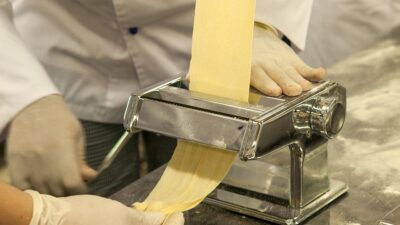The rise of food delivery apps has transformed the dining experience for many consumers around the world. With just a few taps on a smartphone, diners can access a plethora of cuisines from local eateries right at their doorstep. However, while the convenience of these apps is undeniable, there are several factors to consider before hitting that "order" button. Here’s a closer look at the pros and cons of food delivery apps.
Pros of Food Delivery Apps
1. Convenience
Arguably the biggest advantage of food delivery apps is their unparalleled convenience. Whether you’re at home, at work, or even out with friends, you can have a variety of food options at your fingertips. This saves time and effort, especially for those with busy schedules.
2. Variety
Food delivery apps partner with numerous restaurants, giving consumers access to a broad range of cuisines and dining options. From local favorites to international dishes, the choices are almost endless, accommodating various dietary preferences and cravings.
3. User-Friendly Interfaces
Most food delivery apps are designed with user experience in mind. They feature intuitive interfaces that make it easy to browse, search, and order from restaurants. Many also include customer reviews, enabling users to make informed decisions.
4. Promotions and Discounts
Many food delivery platforms offer promotional deals, discounts, and loyalty programs to attract users. These offers can significantly reduce the cost of ordering out, making it more budget-friendly than dining in certain restaurants.
5. Contactless Delivery Options
In response to the COVID-19 pandemic, many food delivery services have introduced contactless delivery options, enhancing safety and reducing customer concerns about health.
Cons of Food Delivery Apps
1. Service Fees and Charges
While ordering through a food delivery app may seem affordable, the additional service fees, delivery charges, and tips can add up quickly. Customers often find themselves paying significantly more than the restaurant’s listed menu prices.
2. Quality Concerns
Food quality can be hit or miss when using delivery services. The time taken for food to be delivered can affect freshness and presentation. Additionally, food that travels might lose its intended taste or texture, leading to disappointment.
3. App Dependence
Relying on food delivery apps can lead to a decreased frequency of cooking at home. This shift can adversely affect dietary habits, resulting in less healthy eating patterns and increased spending on food.
4. Environmental Impact
The environmental footprint of food delivery services can be substantial. The use of single-use packaging, as well as the carbon emissions from delivery vehicles, contribute negatively to ecological concerns.
5. Limited Choice During Peak Times
During busy hours, food delivery apps may limit the number of restaurants available for order, or wait times may increase significantly. This can lead to frustrations for users expecting prompt service.
Conclusion
Food delivery apps offer a modern solution to the age-old dilemma of what to eat, combining convenience and variety in a highly accessible format. However, potential users should weigh these benefits against the drawbacks, including costs, food quality, and environmental concerns. By understanding both the pros and cons, consumers can make informed decisions that best suit their lifestyles and preferences. Whether you choose to indulge in a delivery from your favorite restaurant or opt for a homemade meal, being aware of these factors is crucial in navigating the culinary landscape shaped by technology.



